![]() Editor’s note: In this multipart article, we examine what is likely to become an enduring trend — health and wellness — and how it’s impacted by the decisions you make about your home environment.
Editor’s note: In this multipart article, we examine what is likely to become an enduring trend — health and wellness — and how it’s impacted by the decisions you make about your home environment.
What does the combination of accessible design, comfort and sustainability have in common with health and wellness? Just about everything.
First, let’s define the three environmental components that contribute to health and wellness.
- Accessible residential design and construction ensures that the layout and design elements are accessible for people of all ages and abilities, allowing homeowners to stay in their homes as long as they choose, rather than how long the house allows them to. Accessible design provides occupants with independence, dignity and peace of mind, all of which contribute to health and wellness.
- Designing and building with comfort in mind takes into consideration the occupant’s comfort relative to heating, cooling, artificial and natural light and sound attenuation.
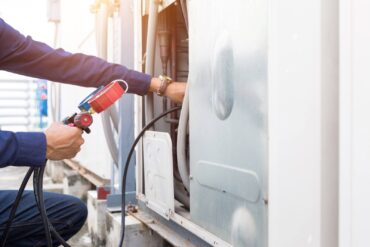 Sustainability includes but is not limited to good indoor air quality, water purification (pure/clean water), energy efficiency, resource efficiency, resiliency and reduced material usage. Also consider factors such as design (think of the methodology used to frame, wrap and insulate the exterior walls or roof of a home; heating, ventilation and air conditioning; smart home technology, etc.) and activities that contribute to climate change (e.g., the use of fossil fuels to power and heat a home, which can also negatively impact indoor air quality).
Sustainability includes but is not limited to good indoor air quality, water purification (pure/clean water), energy efficiency, resource efficiency, resiliency and reduced material usage. Also consider factors such as design (think of the methodology used to frame, wrap and insulate the exterior walls or roof of a home; heating, ventilation and air conditioning; smart home technology, etc.) and activities that contribute to climate change (e.g., the use of fossil fuels to power and heat a home, which can also negatively impact indoor air quality).
 Next, let’s connect the dots between health and wellness, and the combination of accessible design, comfort and sustainability. You can achieve physical and mental health and wellness with a combination of lifestyle (diet, exercise and relaxation) and environmental choices (choosing building materials, household goods and systems that eliminate or mitigate toxic substances) that are augmented with technology to help you create a healthy home — and in turn, personal health and wellness. That may sound a bit other-worldly but keep reading and the connections will hopefully start to resonate.
Next, let’s connect the dots between health and wellness, and the combination of accessible design, comfort and sustainability. You can achieve physical and mental health and wellness with a combination of lifestyle (diet, exercise and relaxation) and environmental choices (choosing building materials, household goods and systems that eliminate or mitigate toxic substances) that are augmented with technology to help you create a healthy home — and in turn, personal health and wellness. That may sound a bit other-worldly but keep reading and the connections will hopefully start to resonate.
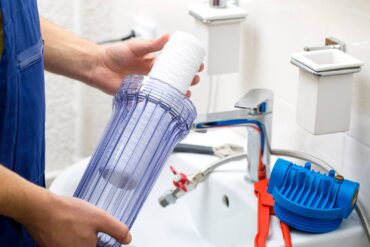 Since the onset of the COVID-19 pandemic, homeowners have developed new perspectives of the role their abodes play in their physical and mental health, as well as their comfort. In simple terms, the summation of accessibility, comfort and sustainability translate into personal health and wellness.
Since the onset of the COVID-19 pandemic, homeowners have developed new perspectives of the role their abodes play in their physical and mental health, as well as their comfort. In simple terms, the summation of accessibility, comfort and sustainability translate into personal health and wellness.
The home is no longer a place you leave to get to work, go on vacation or enjoy entertainment. Home has become a sanctuary that is expected to nurture, inspire (think work from home) and keep us safe. COVID-19 has given homeowners a deeper understanding of what they want from their homes, having gained insight into what actually “works” in their homes and what doesn’t. This newfound knowledge has sparked a significant increase in the demand for residential remodeling services.
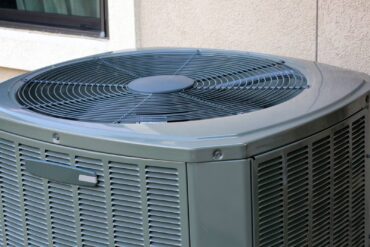 To successfully map out your path of environmental health and wellness, it’s important to define what brings meaning and joy to your life and how thoughtful design, augmented by technology, can help you achieve these goals.
To successfully map out your path of environmental health and wellness, it’s important to define what brings meaning and joy to your life and how thoughtful design, augmented by technology, can help you achieve these goals.
According to the 2021 Kitchen and Bath Market Index study conducted by the National Kitchen and Bath Association, wellness design (a dedicated home office, exercise and meditation rooms, outdoor living spaces, etc.) and product demand (touchless and sensor operated fixtures, antimicrobial countertops, etc.) have increased 100 percent since the onset of the pandemic. Additionally, the number of requests has increased each quarter since the first quarter of 2020 and is expected to continue in this manner for several quarters to come. The same goes for the scope of the average kitchen and bath project, both new and remodeled.
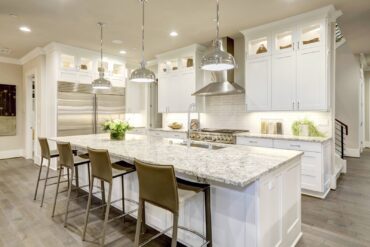 Another validation of the health and wellness trend comes from the home construction sector. More and more contractors, from production home building to custom home building and remodeling, are answering the call for healthier homes by shifting their focus for energy-efficient, high-performance homes to a combined emphasis that includes health and wellness. The good news is this combined emphasis incorporates many of the energy-efficient and high-performance checklist items, such as indoor air quality, moisture control and proper installation and venting of kitchen, bathroom and HVAC equipment, rendering energy savings and reduced maintenance costs.
Another validation of the health and wellness trend comes from the home construction sector. More and more contractors, from production home building to custom home building and remodeling, are answering the call for healthier homes by shifting their focus for energy-efficient, high-performance homes to a combined emphasis that includes health and wellness. The good news is this combined emphasis incorporates many of the energy-efficient and high-performance checklist items, such as indoor air quality, moisture control and proper installation and venting of kitchen, bathroom and HVAC equipment, rendering energy savings and reduced maintenance costs.
A healthy home can be defined by four cornerstones of health and wellness: clean air indoor air quality, clean water (filtration that removes the smell and taste of chemicals and contaminants), good lighting (human-centric lighting) and comfort (acoustics, temperature, safety, aesthetics and a nurturing indoor environment that provides a connection to nature and the outdoors). Let’s take a closer look at each of these.
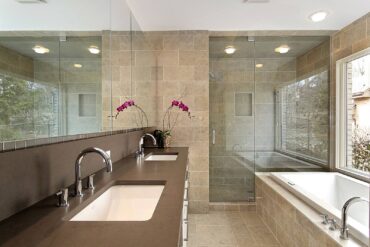 Indoor Air Quality
Indoor Air Quality
According to the U.S. Environmental Protection Agency (EPA), indoor air quality refers to the air quality within and around buildings and structures as it relates to the health and comfort of the building’s occupants. With most people spending up to 90 percent of their time indoors, where the air is roughly 70 percent more polluted than outside air, occupant health can be negatively impacted by poor air quality. Symptoms vary from minor irritation of the eyes, nose and throat to headaches, dizziness and fatigue. There are also direct correlations with heart disease, respiratory disease and certain types of cancer.
Common culprits of poor indoor air quality include:
- Fuel-burning combustion appliances such as gas ranges, cooktops, clothes dryers, water heaters, wood and gas fireplaces and furnaces, all of which can emit carbon monoxide and moisture inside the home.
- Building materials such as vinyl, particle board, glues, adhesives and paints, which can emanate volatile organic compounds (VOCs) such as formaldehyde.
- Cleaning and personal care products comprised of a variety of potentially harmful chemicals and synthetic fragrances.
Additionally, a well-constructed and insulated home can develop “sick house syndrome” if attention is not paid to how the heating and cooling system and ventilation equipment are sized, installed and operated, ensuring they’re balanced and filtered and can manage humidity to prevent mold and mildew growth. As the saying goes, “Build it tight but ventilate it right.”
By identifying and eliminating allergens and pathogens in the indoor space, you can increase the health of your respiratory, cardiovascular and cognitive health.
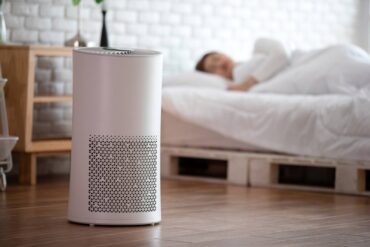 You can make these small changes to help achieve healthy indoor air quality:
You can make these small changes to help achieve healthy indoor air quality:
- Take the Hayward score test to evaluate the air (haywardscore.com/score).
- Use bathroom and kitchen exhaust fans regularly and keep filters and registers clean. Same advice applies to forced-air heating ducts and air-return registers.
- Use cleaning and personal care products made from natural, plant-based components rather than chemical and synthetic components.
- Ban the use of cigarettes, e-cigarettes, vaping, pipe smoking, etc. indoors or within 25 feet of an exterior door.
- Use portable air-filtering appliances in a home with electric wall or baseboard heaters, electric-resistant heat or a forced-air heating system.
- Incorporate and maintain a HEPA (high-efficiency particulate air) filter in a forced-air heating system. Note: Furnace filters can and do remove some airborne particles; however, their main purpose is to protect the furnace itself, not the living space.
- Incorporate air-filtering indoor plants. According to a NASA Clean Air Study, there are several varieties of indoor plants that can help detoxify a home from airborne toxins, dusts and germs present in a variety of household products, materials and furnishings. Such varieties include but are not limited to Barberton daisy, English ivy, snake plant, chrysanthemum and spider plants.
- Use a smart device for indoor air quality monitoring. Reference the EPA’s list of VOCs to better understand what this type of monitor tracks and what the level of identified VOCs means.
- Remove footwear in the foyer or mudroom to prevent pollen and mold introduction to the rest of the home from the bottom of shoes.
- Keep pets groomed to minimize pet dander; consider selecting pet breeds known for minimal shedding.
- When replacing home appliances, consider electric or induction models rather than those fueled by natural gas or propane. Cooking that relies on natural gas or propane releases nitrogen dioxide, carbon monoxide and formaldehyde into the home as a byproduct of combustion, which can impact occupants’ health.
- Install or replace a ceiling fan equipped with UV-C lighting, a technology that is capable of killing coronaviruses and is endorsed by the Centers for Disease Control. Fan manufacturer Big Ass Fans out of Lexington, Kentucky, is currently manufacturing fans with the UV-C lighting incorporated into fan models.
- Keep toxic materials out of your home by educating yourself about the content and manufacturing processes used to produce materials and goods that you use on and in the home.
Bigger changes to make for a lasting positive impact:
- When building or remodeling an interior or exterior extensively, invest in a durable envelope. Don’t skimp on the quality of both the materials and the labor when installing windows, doors, house wrap, siding, caulking and even exterior paints and stains. Skimping here can lead to moisture intrusion, expensive repairs and mold growth, which can breach the exterior wall cavities and spread to interior spaces and seriously affect your health.
- Select building materials and furnishings with indoor air quality in mind. A variety of certifications for a wide variety of materials can assist you in identifying building materials and their components that will not degrade indoor air quality. They include but are not limited to Cradle to Cradle, Green Guard, Floor Score, Green Seal, the Environmental Working Group’s Healthy Living Home Guide, The Red List and Green Label Plus for certified carpet products and more.
- Incorporate a heat-recovery ventilator (HRV) fitted with a HEPA filter in new construction or a major remodel. This ventilation system is energy efficient and a good means for preserving air quality by extracting indoor air from the home at set intervals and replacing it with air from outside of the home.
- Consider hydronic heating (preferably with the tubing installed in light-weight concrete) or ductless heat pumps for whole-home heating. These options eliminate the need for ducting and the associated maintenance of a forced-air ducting system. It’s important to incorporate manual or mechanical make-up air ports to provide the home with fresh air in these closed air systems. An HRV is another option to facilitate the extraction of stale air and replace it with fresh air.
- Incorporate a make-up air port for the kitchen if you use natural gas or propane equipment for cooking. If the Btu from the cooking equipment exceed 40,000, it may be mandatory in your building jurisdiction to incorporate a make-up air port. Some exhaust hood manufacturers have built this feature into their equipment to meet the building code for addressing sick house syndrome. It’s also possible to wire your kitchen exhaust equipment in tandem with a HRV so each time the exhaust equipment is activated, the HRV automatically comes on. According to the EPA, natural gas consumption accounts for 80 percent of fossil fuel emissions from residential and commercial buildings. This has prompted jurisdictions across the nation to ban the incorporation of natural gas or propane cooking equipment in new construction. New York City is the latest in this growing list.
 Incorporate a whole-house fan system that is on 24/7. Standard, off-the-shelf, ducted, ceiling-mounted units can be used for this application. Alternatively, an integrated monitoring and exhaust system, such as the Panasonic Cosmos Healthy Home System, functions seamlessly without any human interaction. Integrated systems take human error out of operating the home, optimizing performance, efficiency and wellness.
Incorporate a whole-house fan system that is on 24/7. Standard, off-the-shelf, ducted, ceiling-mounted units can be used for this application. Alternatively, an integrated monitoring and exhaust system, such as the Panasonic Cosmos Healthy Home System, functions seamlessly without any human interaction. Integrated systems take human error out of operating the home, optimizing performance, efficiency and wellness.- Incorporate bathroom fans that run off a humidistat activated by sensing moisture, overriding the need for human operation. Wire the bathroom fan to the light switch so users can’t avoid using the fan (highly recommended for children’s bathrooms). Incorporate a fan timer that has multiple time intervals with the goal of the user choosing a duration that will address primary and residual moisture.
- Purchase a home that has been certified with the EPA’s Indoor airPLUS label. This certification includes design and construction features that address moisture, radon and pest control; heating, ventilating and air-conditioning practices that optimize indoor air quality; and use combustion venting and building materials with reduced chemical content. For more information, go to epa.gov/indoorairplus.
- Look for other certifications for sustainably built homes that emphasize indoor air quality, such as Leadership in Energy Efficient Design (LEED) by the U.S. Green Building Council, the National Green Building Standard by the National Association of Homebuilders, Built Green Washington by the Master Builders of King & Snohomish Counties, and the Living Building Challenge by the International Living Future Institute. The International WELL Building Institute, which has historically focused on certifying commercial properties, is in the development stages of a WELL Home certification program. Wellness Within Your Walls (WWYW) is another checklist for home health and wellness developed by interior designer Jillian Pritchard Cooke in partnership with residential builders and is expected to be available in 2022.
Clean Water
Clean water, free of chemical and natural contaminants, is integral to the health and wellbeing of all living things — and not just from a drinking and cooking standpoint but also a bathing standpoint. (When you take a hot shower, your pores open and contaminants in the water have an opportunity to be absorbed into your skin).
Contaminants come in four basic forms:
- Chemical — pesticides, chlorine, etc.
- Biological — parasites, bacteria, e-coli, etc.
- Physical — microplastics, sand, gravel, etc.
- Radiological — radon, byproducts from the coal and gas industries, man-made nuclear reactions resulting in radioactive cesium and iodine, etc.
The Safe Drinking Act of 1974 (subsequently updated in 1996), is under EPA jurisdiction and was established to set minimum standards for safe drinking water, as well as monitoring and compliance regulations specific to drinking water. Correlating these minimum standards with the composition of your home’s water supply can be very enlightening.
By administering a simple test with a sample of your home’s tap water, you can determine if there are any concerns with the water derived from your indoor plumbing fixtures. Tests are readily available from online and brick-and-mortar retailers. Not all water tests provide an analysis of all contaminants. Read the label carefully before you purchase to ensure you are testing for the substances that matter to you the most (i.e., lead, chlorine, iron, e-coli, etc.). You can also hire a professional in the field of water purification to provide testing for you for a fee.
Once any unwanted content in your water has been identified, you can turn your attention to how to best remedy the situation — water filtration or water purification. Note: Water softening can be paired with filtration or purification but is a separate function not directly associated with health and wellness.
There are a wide variety of water filtration and purification options for domestic use. Here are the primary differences between filtration and purification:
- Filtration addresses impurities such as bacteria and sediment particles but not necessarily chemicals or viruses that make their way into a home’s water supply. Filtration typically is accomplished by installing an activated carbon filter between the home’s water supply and the point of use such as a faucet or refrigerator ice maker. The filter catches both debris particles and certain contaminants. For more comprehensive filtration, the filter is installed at the point of the water’s entrance into the home. A whole-house system can ensure that the water you are brushing your teeth or bathing your child with is free of a wide variety of contaminants. Filtration has many benefits, such as improving the taste, color and purity of the water, but falls short of comprehensive removal of chemicals and viruses.
 Water purification goes a few steps beyond filtration by removing chemicals, viruses and other biological contaminants and minerals. Removing minerals from your water can have both benefits and drawbacks. Benefits include fewer mineral deposits on plumbing fixtures and fewer complications with certain medical conditions. One drawback may be the need to supplement your diet for certain minerals you’re no longer absorbing from your tap water, such as calcium, magnesium, potassium and iron. One common method of water purification other than boiling water is reverse osmosis, whereby water is forced through a semipermeable membrane to sequester a variety of contaminants. One environmental issue with reverse osmosis is that several gallons or water go into making each gallon of purified water. Another common method is deionization, commonly used in factories and manufacturing facilities, whereby negative and positive molecules in the water are replaced with hydrogen (positive) and hydroxyl (negative) molecules. This method requires a sizable investment in purification equipment.
Water purification goes a few steps beyond filtration by removing chemicals, viruses and other biological contaminants and minerals. Removing minerals from your water can have both benefits and drawbacks. Benefits include fewer mineral deposits on plumbing fixtures and fewer complications with certain medical conditions. One drawback may be the need to supplement your diet for certain minerals you’re no longer absorbing from your tap water, such as calcium, magnesium, potassium and iron. One common method of water purification other than boiling water is reverse osmosis, whereby water is forced through a semipermeable membrane to sequester a variety of contaminants. One environmental issue with reverse osmosis is that several gallons or water go into making each gallon of purified water. Another common method is deionization, commonly used in factories and manufacturing facilities, whereby negative and positive molecules in the water are replaced with hydrogen (positive) and hydroxyl (negative) molecules. This method requires a sizable investment in purification equipment.
Many plumbers are qualified to provide you with an overview of your options from both a maintenance and a cost standpoint. It’s very important to choose a system that you can maintain and manage and for which filters or other requisite membranes are readily available and fit your budget. A maintenance contract may also be a good option to consider. Lastly, recognize that different systems have different space requirements and will need to be carefully planned for to ensure there is adequate space for operation and maintenance of the equipment.
The second installment of these series will look at the importance of lighting with an emphasis on human-centric lighting (HCL), health and wellness technology, and comfort. The third and final installment will discuss design and material trends that embody health and wellness.



























Comments